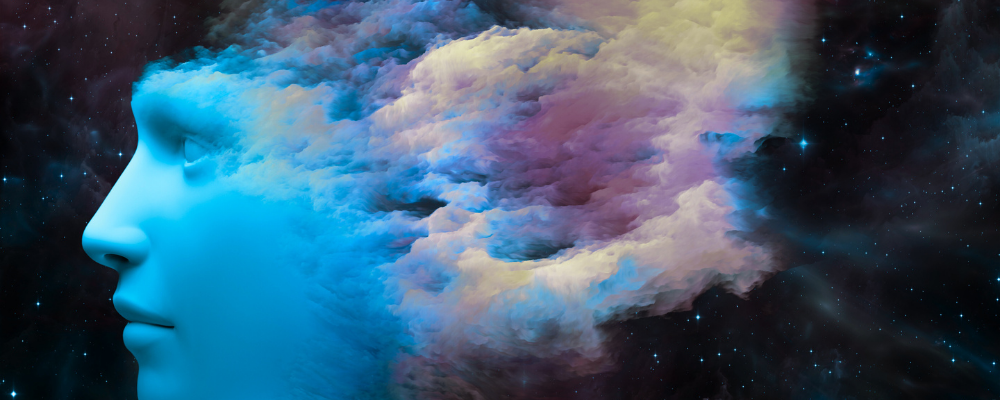A ball moves quickly through the air. One person throws, another catches. Both are alert, laughing, completely present. There is rhythm in their exchange, a lightness, trust, and shared focus that feels almost effortless.
Now picture someone else at a live music gig. The lights drop, the first note hits, and they are gone, lost in the sound, eyes closed, moving with the rhythm, completely immersed in the moment.
Two completely different experiences. One filled with connection and movement, the other shaped by stillness and sound. Yet both people are in the same state of mind: play.
Play does not always look the same, but it feels the same. It is that mix of focus and freedom when time disappears, creativity flows, and you feel part of something bigger than yourself. It is connection without effort. Energy without push.
We often think of play as what we do, a game, a sport, or a moment of laughter. But play is not the activity. It is the state we reach when we feel safe enough to explore, curious enough to try, and connected enough to lose track of time.

The Truth: Play Is a State of Mind
Play is not the activity itself. It is the state your brain and body enter when you feel safe, curious, and connected. It is that invisible shift when focus sharpens, laughter feels easy, and ideas seem to appear without effort.
Science tells us that when we play, our brains release a powerful mix of chemicals that help us perform at our best. Dopamine fuels motivation and focus. Oxytocin builds trust and connection. Serotonin creates calm and satisfaction. Endorphins lift mood and keep us in flow. Together, they form what we call the DOSE of play.
In this state, the brain does its best work. People listen differently. They respond faster. Creativity feels natural rather than forced. Play brings together the emotional safety of belonging and the cognitive freedom to explore.
It is also deeply personal. For one person, play might happen in conversation. For another, it might appear in movement, problem-solving, or quiet reflection. That is why play cannot be taught as a single behaviour. It has to be discovered.
When teams learn to recognise their own version of play, they tap into a shared energy that cannot be faked. It is the space where people feel most human, most capable, and most connected.

When One Person Plays and Another Does Not
Picture two people working side by side on the same project. One is animated, ideas flowing, completely absorbed in the moment. The other looks flat, distracted, already thinking about the next deadline. The task is the same, yet their experience could not be more different.
This is the quiet truth about play. It is deeply individual. What pulls one person into flow might leave another feeling overwhelmed or disconnected. The same activity that feels energising to one may feel chaotic to someone else.
Play depends on context, personality, and emotion. It needs the right conditions to appear; psychological safety, permission to explore, and an environment that feels open rather than judged. When even one of those is missing, play shuts down.
This difference matters because it explains why teams can share an experience, yet only some people walk away feeling recharged. It is not about effort or attitude. It is about alignment. When our personal triggers for play are met, we engage naturally. When they are not, we protect ourselves instead.
For leaders, this is where the work begins. Understanding how each person experiences play is the key to building collective rhythm. A team cannot live in flow unless everyone feels seen and safe enough to enter it in their own way.
The Workplace Question
After almost every event, someone says it.
“That was so much fun, but we can’t play LEGO in the office all day.”
It is said with a laugh, but the question behind it is real. How do we bring that same energy, connection, and lightness back into the day-to-day? How do we hold onto the play state when we return to meetings, deadlines, and full inboxes?
The truth is, those activities, the LEGO, the laughter, the movement, the moments of friendly competition are what help people access play. They are how we reconnect to curiosity and creativity. But play does not have to stop when the activity ends. It can live in the way a team communicates, resets, and works together.
That is what we mean when we say play is a state of being. It starts through action but continues through awareness. Once a team understands what helps them enter that state, laughter, movement, music, problem-solving, or a sense of shared purpose they can begin to recreate it anywhere.
This is where The Culture Playbook comes in. It helps teams capture what play felt like in that moment and translate it into their everyday rhythm, so that energy and connection are not left behind at the event, but carried into how they work all year round.

Introducing The Culture Playbook
The Culture Playbook was created for those moments when a team is ready to pause, reflect, and bring more of what works into the everyday. We built it for leaders who understand that culture is not built in strategy sessions or staff surveys, but in how people feel when they are together. It was designed for the teams who leave an event saying, “We need more of this,” but are unsure how to carry that energy into the everyday.
The Playbook turns that feeling into something practical. It helps teams slow down long enough to notice what play looks like for them, to name the cues that bring them to life, and to agree on how to keep those moments going.
The result is a shared language that captures what helps the team feel alive and effective. These rhythms become reminders that play is not a one-off event, but a repeatable state that can be accessed through simple, intentional moments.
By the end, teams walk away not just with insight, but with a set of living principles that define how they want to work, connect, and create together.
From Reflection to Practice
The Culture Playbook is a free, leader-led coaching tool for teams who want to bring the feeling of play into their everyday work. It gives leaders the structure to guide meaningful reflection, build shared language, and help their teams rediscover what makes them work well together.
For some, that is exactly what they need; a simple, practical way to keep culture conversations alive.
For others, the next step is deeper. That is where The Play Principles come in.
The Play Principles take the insights from The Culture Playbook and turn them into habits that last. Led by our play specialists, the program helps teams embed their rhythms into four foundations of culture: Connection, Learning, Accountability, and Balance. It is hands-on, energising, and designed to transform the state of play from something that happens occasionally into something that defines how your team performs all year.
Whether you start with The Culture Playbook or dive straight into The Play Principles, both are designed with one goal; to help your team feel more connected, creative, and confident at work.
Use the free tool below to start your reflection or speak with us to learn more about how our play specialists can bring The Play Principles to life with your team.




